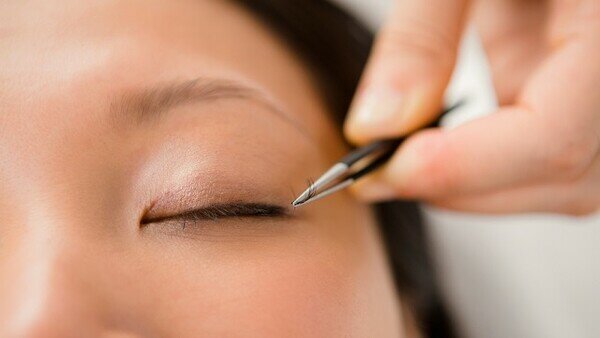The love of beauty is inherent in all ladies. A simple reflection is the amount of time a lady spends on her makeup every day. In recent years a new type of eyelash beauty service called "eyelash extension" became increasingly popular, which selling points are to effectively save some time on daily makeup routine and the effect is claimed to last up to several weeks.
The Consumer Council, however, reminds consumers who are planning to undergo this procedure to be fully aware of the potential risks of eye infections such as development of keratoconjunctivitis and allergic blepharitis in extreme cases.
"Eyelash extension" service is also known as "semi-permanent eyelash extension". Instead of directly implanting false eyelashes into the skin, they are adhered to natural eyelashes lash by lash with adhesive. Around 40 to 80 lashes are applied to each eye and each lash application has to be meticulously angled to achieve a natural look.
How long the eyelash extension lasts is determined by various factors including the adhesives used, the techniques of the beauticians, natural sebum around the eye area, eyelash growth cycle as well as skincare and makeup habits.
Even without wearing the false eyelashes, the natural cycle for eyelashes to fall off is every 3 to 4 weeks, though beauty salons claims that the effect of eyelash extension may last for two to six weeks.
Worse still, the false eyelashes could be far too heavy for the natural eyelashes to support, making them fall off due to over-dragging or overloading. In the long run, this may affect the re-growth of natural eyelashes, leading to permanent eyelash reduction.
Safety is always a major concern for consumers. After reviewing information on the website of some local beauty salons, the Council found that only a few of them have clearly specified the major ingredient of such adhesives, cyanoacrylates, an ingredient also found in adhesives for medical use on skin wound and in superglue for general domestic and industrial uses.
Chemicals in the adhesives will be vaporized during the application procedure, causing eyes and skin irritations or affecting respiratory tracts.
Besides, some of these adhesives may have been added with rubber and latex for higher extendibility which, however, can cause allergy to some people.
Furthermore, lack of proper cleansing of the false eyelashes and tools may also put consumers at risk of eye infection and inflammation.
Although eyelash extension saves a significant amount of makeup time, improper handling can lead to ocular disorders with loss outweighing the efficiency gain.
Generally speaking, beauty salons in Hong Kong charge from a few hundred to over a thousand dollars for each time of upper eyelash extension. Actual price depends on the quality, quantity and style of false eyelashes to be used. Additional fees may apply for specified beauticians and for fixing eyelash drop-off.
Consumers are advised to consider the following before undergoing an eyelash extension procedure:
- People suffering from eye disease or susceptible to eye infection, and those with wound around the eyes or have undergone eye surgery such as laser refractive surgery, or those who are known to be allergic to ingredients of adhesives and eyelid fixing tapes are recommended to stay away from this service.
- Extension effect of eyelashes may not be satisfactory on people with sparse eyelashes. Ladies with short eyelashes should further think twice, as it is easier for the chemicals in the adhesives to contact with the eyes.
- Eye infections could worsen very quickly. In case of discomfort seek medical advice immediately.
Following is a list of advice for the beauty industry:
- Proper ventilation measures are necessary where eyelash extension is performed in order to minimize the potential adverse effect caused by the chemicals vaporized during the procedure.
- Remember to inform consumers about the ingredients of the adhesives and false eyelash removing agents being used to avoid allergic reactions.
- If feasible, consider conducting an allergy test before confirming the procedure.
- Ensure the hygiene and safety of false eyelashes and the tools being used.
The Consumer Council reserves all its right (including copyright) in respect of CHOICE magazine and Onlin CHOICE (https://echoice.consumer.org.hk/).



